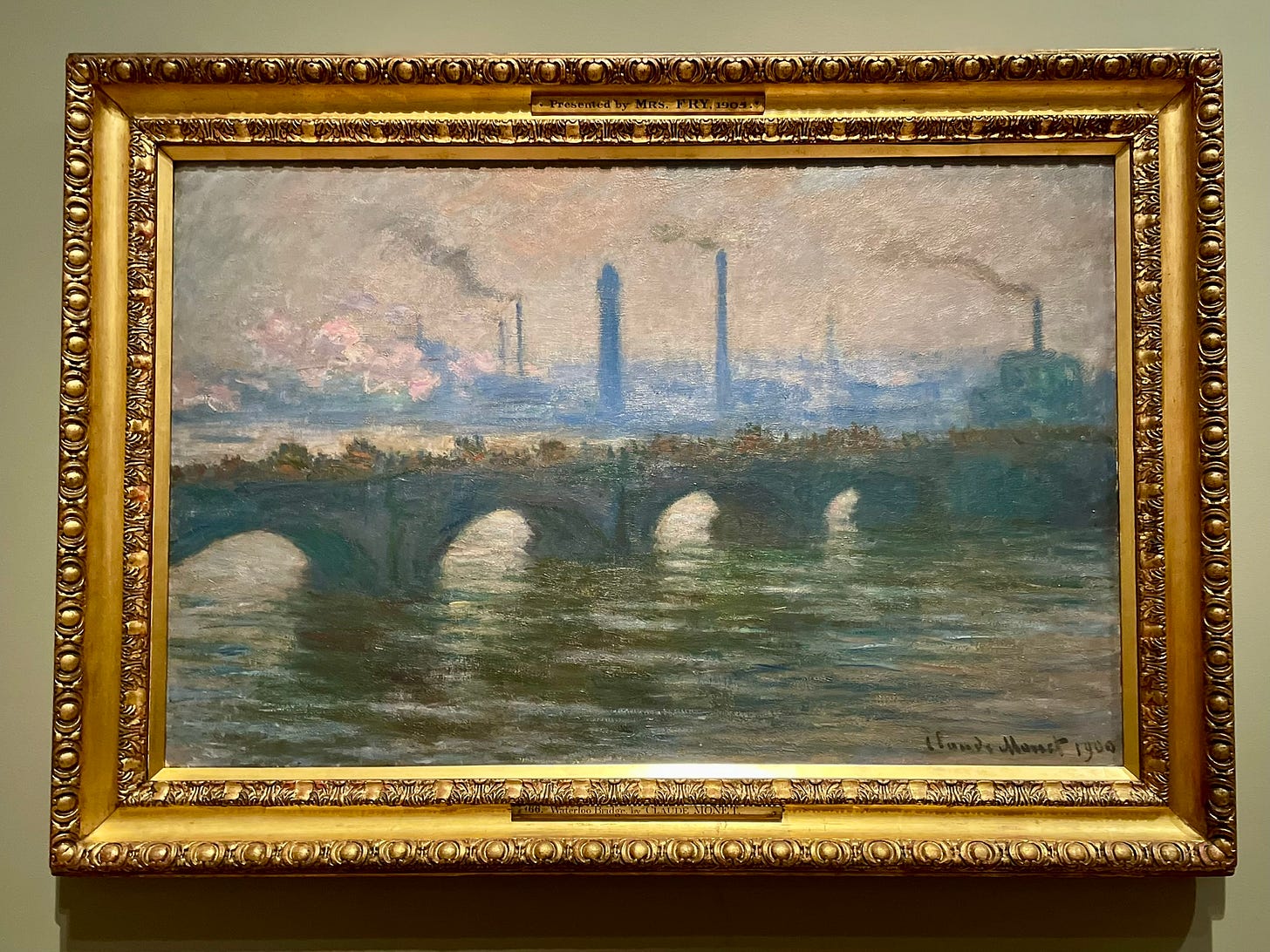The Courtauld Gallery is part of the elegant Somerset House arts and culture centre based on the Strand in London. The centre spreads from the Strand entrance to the Embankment with a fantastic large courtyard in the middle, it was redeveloped from an earlier Royal Palace in the 18th century and there’s no escaping the Baroque influences over the buildings giving them a sense of timeless grandeur.
The exhibition has been a runaway success, it’s actually sold out until the end of the run so I was lucky to get some tickets at all. Access to the exhibition is through the Impressionist and Post-Impressionist gallery, which sets you up with a chance to see some of the most iconic artworks of this era. Manet’s enigmatic A Bar at the Folies- Bergere, 1882, grabs your eye as you head towards the exhibition, Monet’s Antibes, 1888 and a beautifully sozzled Lucy Jourdain in Toulouse-Lautrec’s In the Private Dining Room at the Rat Mort, 1899, to name just a few, honestly, if you’ve seen it on a poster, it’s here.
But it was Monet and London that we were here to see, it’s a small exhibition, just two rooms, it focuses on Monet’s interest in the atmospheric conditions of this period, the fogs created by the industrialisation of the city and it’s interplay with different times of day and weather conditions. Monet came to London to capture these scenes over the period of 1899-1901, he stayed at the Savoy, how glamorous, and concentrated his efforts on three sites, Charing Cross Bridge, Waterloo Bridge and the Houses of Parliament.
As with his wider output, it was the impression he was trying to capture, pinning down and exaggerating atmospheric conditions. The first room contains images of Charing Cross Bridge and Waterloo Bridge, the tones he uses are so expressive, I found Waterloo Bridge, Overcast Weather, 1900, really rich, the fascination with the effects produced by industrial smoke is evidenced by the numerous chimneys belching out pollution and the various colours created, then in the foreground you see a packed bridge, full of carriages and horse drawn omnibuses showing London as a vibrant, thriving city. It’s interesting isn’t it that what we would now consider to be horrific environmental damage was seen as progress of the first order!
The next room was really amazing as a number of views of the Houses of Parliament were lined up around the room, it was really quite a privilege to be able to see these assembled together again and to get a real sense of what Monet was working towards. London, The Houses of Parliament, Shaft of Sunlight in the Fog, is a fiery beast, I love that reflection on the water which almost sets it ablaze but then he also hits us with The Houses of Parliament, Sunset, 1903, in much calmer blues, purples and greens giving a completely different image.
The labelling of the exhibition is very informative with little vignettes about Monet’s thought processes through the exchange of letters with his wife and pointing to things like the fact that the canvases for the Houses of Parliament series were especially commissioned squares rather than off the peg rectangular ones, that seems to set them apart from the other subjects in the London views.
One of the points made is the comparison to Turner’s earlier impressionistic works, the exhibition labelling suggests that although Monet admired Turner, he was not influenced by him. This would seem to be a debated point in Art History, I do recall one of the first exhibitions I went to when studying was Turner, Whistler, Monet at Tate Britain in 2005, it was excellent and the suggestion was that Turner was indeed an influence. Here’s Turner’s Rain, Steam and Speed, 1844, painted almost half a century earlier, the same preoccupation with differing atmospherics and the notions of modernity seem to suggest some influence, what do you think?
This was a great small exhibition, it is quite a unique chance to see so many paintings from the London series together and to really get an understanding of what Monet was thinking about when painting the city. It seems a shame that the exhibition is sold out as it is quite a unique event, who knows, it may get extended!
Rita Fennell
Gallery Tart!







Great piece Rita ( the Courtauld is my favourite London gallery) and I too saw the Tate Britain exhibition you mention in 2005 and like you can't believe that Turner did not have some influence on Monet. Although Turner's work is in the romantic style, whereas Impressionist painting will stick to realistic principles - the artist representing nothing but what he sees - I certainly see in Turner's work elements of Impressionism. I confess Monet's work doesn't quite do it for me. I'm much more a Manet man. Even if I had gone to the exhibition I would not have got past Suzon and her bar - a favourite painting of mine!